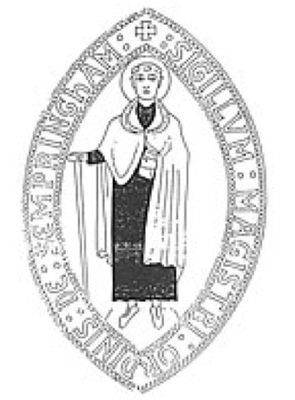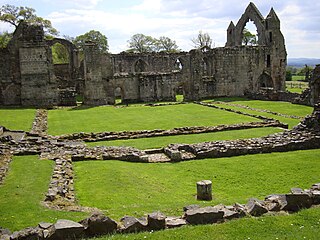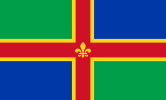
An abbey is a type of monastery used by members of a religious order under the governance of an abbot or abbess. Abbeys provide a complex of buildings and land for religious activities, work, and housing of Christian monks and nuns.

The dissolution of the monasteries, occasionally referred to as the suppression of the monasteries, was the set of administrative and legal processes between 1536 and 1541 by which Henry VIII disbanded monasteries, priories, convents, and friaries in England, Wales, and Ireland, expropriated their income, disposed of their assets, and provided for their former personnel and functions. Although the policy was originally envisaged as increasing the regular income of the Crown, much former monastic property was sold off to fund Henry's military campaigns in the 1540s. He was given the authority to do this in England and Wales by the Act of Supremacy, passed by Parliament in 1534, which made him Supreme Head of the Church in England, thus separating England from papal authority, and by the First Suppression Act (1535) and the Second Suppression Act (1539). While Thomas Cromwell, vicar-general and vicegerent of England, is often considered the leader of the dissolutions, he merely oversaw the project, one he had hoped to use for reform of monasteries, not closure or seizure. The dissolution project was created by England's Lord Chancellor Thomas Audley, and Court of Augmentations head Richard Rich.

Southwark Cathedral or The Cathedral and Collegiate Church of St Saviour and St Mary Overie, Southwark, London, lies on the south bank of the River Thames close to London Bridge. It is the mother church of the Anglican Diocese of Southwark. It has been a place of Christian worship for more than 1,000 years, but a cathedral only since the creation of the diocese of Southwark in 1905.

The Gilbertine Order of Canons Regular was founded around 1130 by Saint Gilbert in Sempringham, Lincolnshire, where Gilbert was the parish priest. It was the only completely English religious order and came to an end in the 16th century at the time of the Dissolution of the Monasteries. Modest Gilbertine revivals have taken place in the late 20th and early 21st centuries on three continents.

Haughmond Abbey is a ruined, medieval, Augustinian monastery a few miles from Shrewsbury, England. It was probably founded in the early 12th century and was closely associated with the FitzAlan family, who became Earls of Arundel, and some of their wealthier vassals and allies. It was a substantial, successful and wealthy house for most of its four centuries, although evidence of abuses appeared before its dissolution in 1539. The buildings fell into disrepair and the church was largely destroyed, although the remains of some of the domestic buildings remain impressive. The site is now in the care of English Heritage and is open to the public during the summer.

Wainfleet All Saints is an ancient port and market town on the east coast of England, in the East Lindsey district of Lincolnshire, on the A52 road 5 miles (8 km) south-west of Skegness and 14 miles (23 km) north-east of Boston. It stands on two small rivers, the Steeping and Limb, that form Wainfleet Haven. The town is close to the Lincolnshire Wolds. The village of Wainfleet St Mary is to the south.

The Priory of St. Mary the Virgin and St. Martin of the New Work, or Newark, commonly called Dover Priory, was a priory at Dover in southeast England. It was variously independent in rule, then occupied by canons regular of the Augustinian rule, then finally monks of the Benedictine rule as a cell of Christchurch Monastery, Canterbury.

Mattersey Priory is a former monastery of the Gilbertine order, located near the village of Mattersey, Nottinghamshire, England. It is currently managed by English Heritage.

Barlings Abbey, Lincolnshire, was a Premonstratensian monastery in England, founded in 1154, as a daughter house of the Abbey of St. Mary and St. Martial in Newsham.

The Priory Church of St Peter with its monastery was founded in 1132 by Henry I for Augustinian Canons in Dunstable, Bedfordshire, England. St Peter's today is only the nave of what remains of an originally much larger Augustinian priory church. The monastic buildings consisted of a dormitory for the monks, an infirmary, stables, workshops, bakehouse, brewhouse and buttery. There was also a hostel for pilgrims and travellers, the remains of which is known today as Priory House. Opposite the Priory was one of the royal palaces belonging to Henry I, known as Kingsbury.

Tupholme Abbey was a Premonstratensian abbey close to the River Witham some 10+1⁄2 miles (16.9 km) east of the city of Lincoln, England. The Witham valley in Lincolnshire is notable for its high concentration of monasteries—there were six on the east bank and three on the west—all presumably drawn to the area by the usefulness of the River Witham for transport and by the wealth that it transported. The abbey was largely destroyed by 1538, after being seized during Henry VIII's Dissolution of the Monasteries.
South Kyme is a small village and civil parish in the North Kesteven district of Lincolnshire, England. The population of the civil parish at the 2011 census was 393. It is located 2.5 miles (4 km) south-east from North Kyme which is itself 2.5 miles (4 km) from Billinghay.

Caldwell Priory was a priory of Canons of the Holy Sepulchre in Bedfordshire, England, from circa 1154 to 1536. It was situated in the south-west of Bedford on the south bank of the River Great Ouse.

Gresley Priory was a monastery of Augustinian Canons regular in Church Gresley, Derbyshire, England, founded in the 12th century.

Kirby Bellars Priory was a small priory of Canons Regular of Saint Augustine in Leicestershire, England. It is now the Church of England Parish Church of Saint Peter's serving the village of Kirby Bellars.

Bullington Priory was a priory in Bullington, Lincolnshire, England.
Markby Priory was a priory in the village of Markby, Lincolnshire, England.

Nocton Park Priory was an Augustinian priory in Nocton, Lincolnshire, England.

Sempringham Priory was a priory in Lincolnshire, England, located in the medieval hamlet of Sempringham, to the northwest of Pointon. Today, all that remains of the priory is a marking on the ground where the walls stood and a square, which are identifiable only in aerial photos of the vicinity. However, the parish church of St Andrew's, built around 1100 AD, is witness to the priory standing alone in a field away from the main road.

Wainfleet St Mary is a village and civil parish in the East Lindsey district of Lincolnshire, England. It is situated directly south of Wainfleet All Saints on the A52 road, 5 miles (8 km) south-west from Skegness and 14 miles (23 km) north-east from Boston. The 2001 Census recorded a population of 1,106, reducing to 1,025 at the 2011 census. It includes the hamlet of Wainfleet Bank.
























